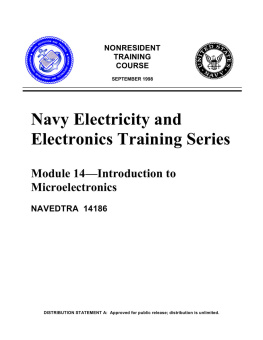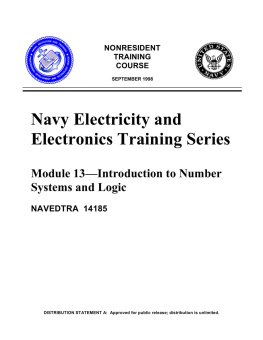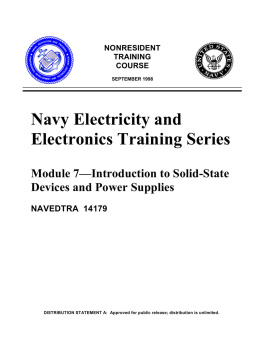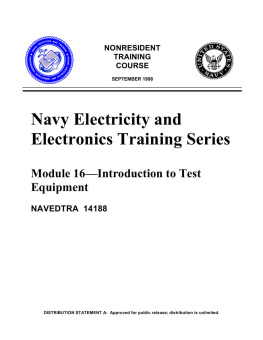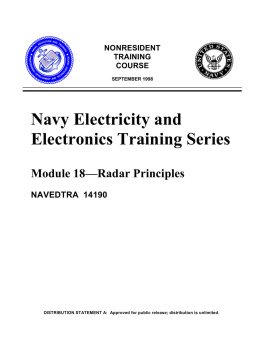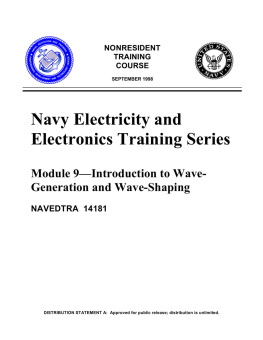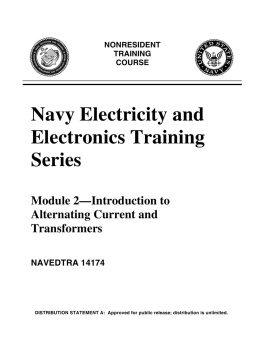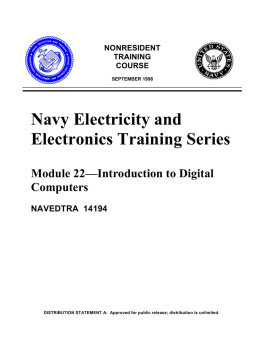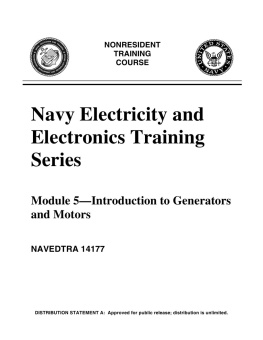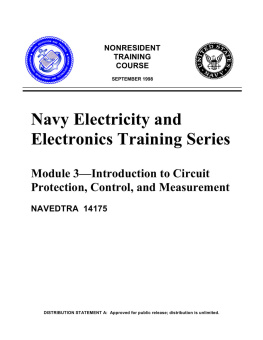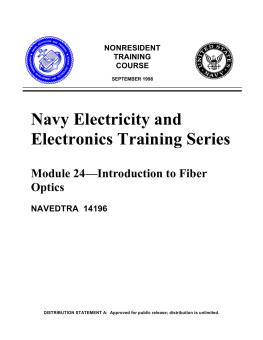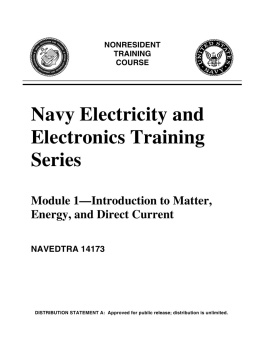Naval Education - Introduction to Microelectronics
Here you can read online Naval Education - Introduction to Microelectronics full text of the book (entire story) in english for free. Download pdf and epub, get meaning, cover and reviews about this ebook. publisher: Naval Education & Training Professional Development & Technology Center, genre: Science / Computer. Description of the work, (preface) as well as reviews are available. Best literature library LitArk.com created for fans of good reading and offers a wide selection of genres:
Romance novel
Science fiction
Adventure
Detective
Science
History
Home and family
Prose
Art
Politics
Computer
Non-fiction
Religion
Business
Children
Humor
Choose a favorite category and find really read worthwhile books. Enjoy immersion in the world of imagination, feel the emotions of the characters or learn something new for yourself, make an fascinating discovery.
- Book:Introduction to Microelectronics
- Author:
- Publisher:Naval Education & Training Professional Development & Technology Center
- Genre:
- Rating:3 / 5
- Favourites:Add to favourites
- Your mark:
- 60
- 1
- 2
- 3
- 4
- 5
Introduction to Microelectronics: summary, description and annotation
We offer to read an annotation, description, summary or preface (depends on what the author of the book "Introduction to Microelectronics" wrote himself). If you haven't found the necessary information about the book — write in the comments, we will try to find it.
Introduction to Microelectronics — read online for free the complete book (whole text) full work
Below is the text of the book, divided by pages. System saving the place of the last page read, allows you to conveniently read the book "Introduction to Microelectronics" online for free, without having to search again every time where you left off. Put a bookmark, and you can go to the page where you finished reading at any time.
Font size:
Interval:
Bookmark:
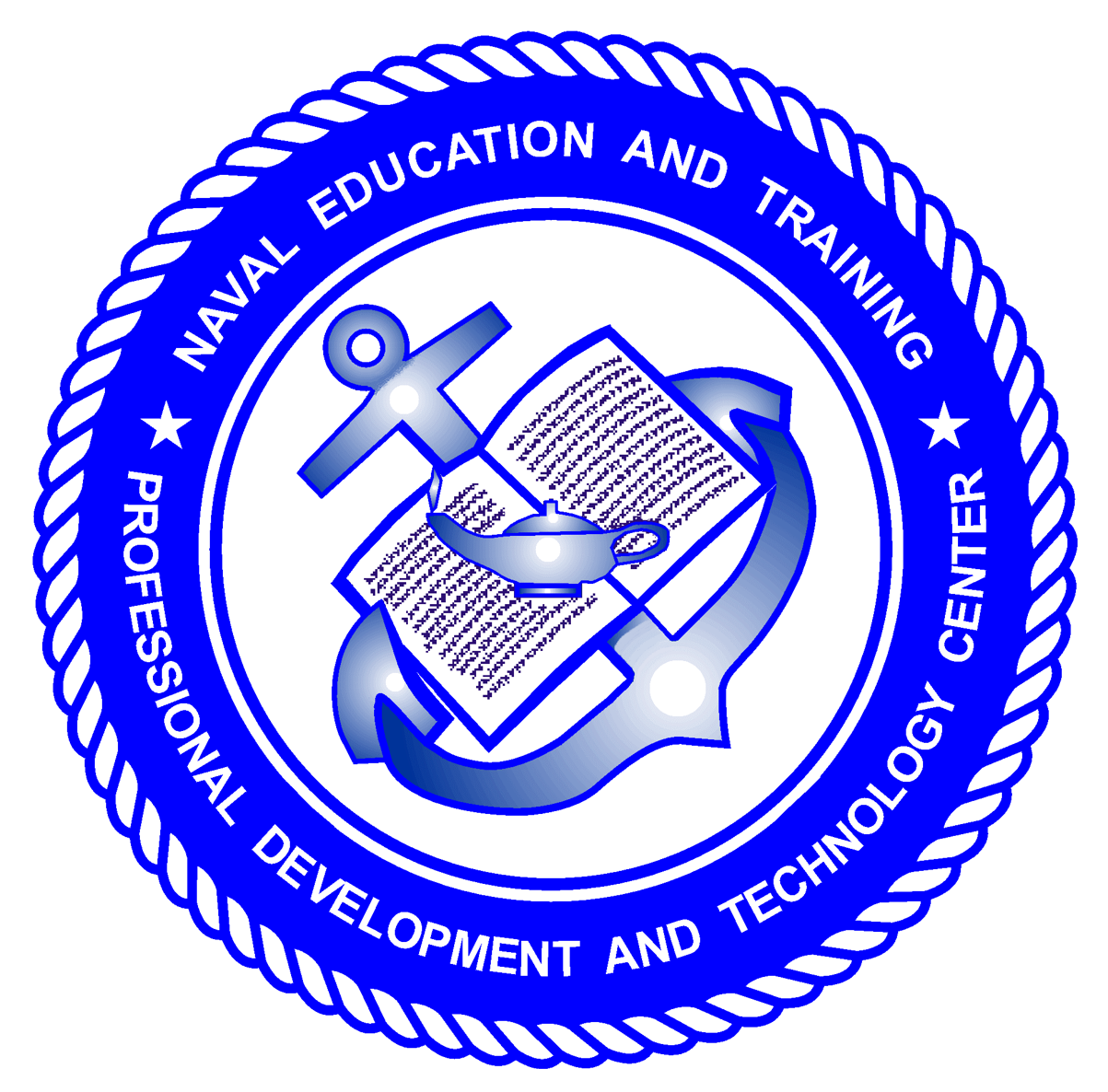 NONRESIDENTTRAININGCOURSESEPTEMBER 1998Navy Electricity andElectronics Training SeriesModule 14Introduction toMicroelectronicsNAVEDTRA 14186DISTRIBUTION STATEMENT A: Approved for public release; distribution is unlimited.Although the words he, him, andhis are used sparingly in this course toenhancecommunication,theyarenotintended to be gender driven or to affront ordiscriminate against anyone.DISTRIBUTION STATEMENT A: Approved for public release; distribution is unlimited.
NONRESIDENTTRAININGCOURSESEPTEMBER 1998Navy Electricity andElectronics Training SeriesModule 14Introduction toMicroelectronicsNAVEDTRA 14186DISTRIBUTION STATEMENT A: Approved for public release; distribution is unlimited.Although the words he, him, andhis are used sparingly in this course toenhancecommunication,theyarenotintended to be gender driven or to affront ordiscriminate against anyone.DISTRIBUTION STATEMENT A: Approved for public release; distribution is unlimited.
It also reflects guidance provided by Enlisted Community Managers (ECMs) and other senior personnel, technical references, instructions, etc., and either the occupational or naval standards, which are listed in the Manual of Navy Enlisted Manpower Personnel Classificationsand Occupational Standards, NAVPERS 18068. THE QUESTIONS: The questions that appear in this course are designed to help you understand the material in the text. VALUE: In completing this course, you will improve your military and professional knowledge. Importantly, it can also help you study for the Navy-wide advancement in rate examination. If you are studying and discover a reference in the text to another publication for further information, look it up. 1998 Edition Prepared byTDCS Paul H.Smith Published by NAVAL EDUCATION AND TRAINING PROFESSIONAL DEVELOPMENT AND TECHNOLOGY CENTER NAVSUP Logistics Tracking Number0504-LP-026-8390 i Sailors Creed I am a United States Sailor.
I will support and defend the Constitution of the United States of America and I will obey the orders of those appointed over me. I represent the fighting spirit of the Navy and those who have gone before me to defend freedom and democracy around the world. I proudly serve my countrys Navy combat team with honor, courage and commitment. I am committed to excellence and the fair treatment of all. ii TABLE OF CONTENTS
Glossary.................................................................................................................. AI-1 II. Reference List......................................................................................................... AII-1 INDEX ......................................................................................................................... INDEX-1 iii CREDITS Many of the figures included in this edition of NEETS, Module 14, Introduction toMicroelectronics, were provided by the 2M section of the Education and Training Division, Naval Air Rework Facility, Pensacola, Florida, and the Naval Undersea Warfare Engineering Center, Keyport, Washington. Their assistance is gratefully acknowledged.
Permission to use the trademark PANAVISE by Pana Vise Products, Inc., is gratefully acknowledged. The illustrations indicated below were provided by the designated companies. Permission to use these illustrations is gratefully acknowledged: SOURCE FIGURE Siliconix, Inc. 1-33 Pana Vise Products, Inc. (former company name: 1-34 Harris Semiconductors) iv NAVY ELECTRICITY AND ELECTRONICS TRAININGSERIES The Navy Electricity and Electronics Training Series (NEETS) was developed for use by personnel in many electrical- and electronic-related Navy ratings. Written by, and with the advice of, senior technicians in these ratings, this series provides beginners with fundamental electrical and electronic concepts through self-study.
The presentation of this series is not oriented to any specific rating structure, but is divided into modules containing related information organized into traditional paths of instruction. The series is designed to give small amounts of information that can be easily digested before advancing further into the more complex material. For a student just becoming acquainted with electricity or electronics, it is highly recommended that the modules be studied in their suggested sequence. While there is a listing of NEETS by module title, the following brief descriptions give a quick overview of how the individual modules flow together. Module 1,Introduction to Matter, Energy, and Direct Current, introduces the course with a short history of electricity and electronics and proceeds into the characteristics of matter, energy, and direct current (dc). It also describes some of the general safety precautions and first-aid procedures that should be common knowledge for a person working in the field of electricity.
Related safety hints are located throughout the rest of the series, as well. Module 2,Introduction to Alternating Current and Transformers, is an introduction to alternating current (ac) and transformers, including basic ac theory and fundamentals of electromagnetism, inductance, capacitance, impedance, and transformers. Module 3,Introduction to Circuit Protection, Control, and Measurement, encompasses circuit breakers, fuses, and current limiters used in circuit protection, as well as the theory and use of meters as electrical measuring devices. Module 4,Introduction to Electrical Conductors, Wiring Techniques, and Schematic Reading, presents conductor usage, insulation used as wire covering, splicing, termination of wiring, soldering, and reading electrical wiring diagrams. Module 5,Introduction to Generators and Motors, is an introduction to generators and motors, and covers the uses of ac and dc generators and motors in the conversion of electrical and mechanical energies. Module 7, Introduction to Solid-State Devices and Power Supplies, is similar to module 6, but it is in reference to solid-state devices. Module 8,Introduction to Amplifiers, covers amplifiers. Module 9,Introduction to Wave-Generation and Wave-Shaping Circuits, discusses wave generation and wave-shaping circuits. Module 10,Introduction to Wave Propagation, Transmission Lines, and Antennas, presents the characteristics of wave propagation, transmission lines, and antennas. v Module 11,Microwave Principles, explains microwave oscillators, amplifiers, and waveguides. Module 12,Modulation Principles, discusses the principles of modulation. Module 13,Introduction to Number Systems and Logic Circuits, presents the fundamental concepts of number systems, Boolean algebra, and logic circuits, all of which pertain to digital computers.
Next pageFont size:
Interval:
Bookmark:
Similar books «Introduction to Microelectronics»
Look at similar books to Introduction to Microelectronics. We have selected literature similar in name and meaning in the hope of providing readers with more options to find new, interesting, not yet read works.
Discussion, reviews of the book Introduction to Microelectronics and just readers' own opinions. Leave your comments, write what you think about the work, its meaning or the main characters. Specify what exactly you liked and what you didn't like, and why you think so.

